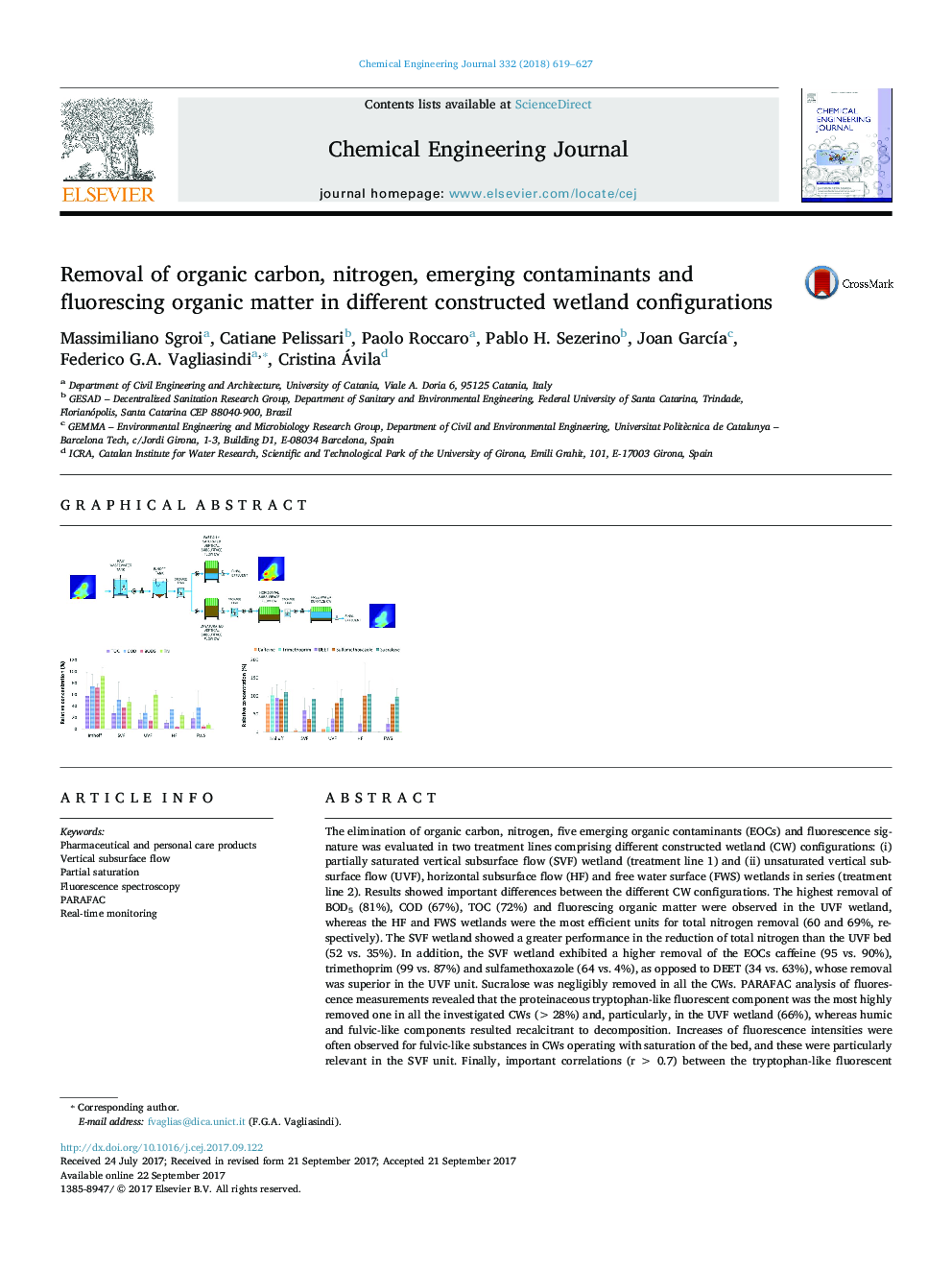| کد مقاله | کد نشریه | سال انتشار | مقاله انگلیسی | نسخه تمام متن |
|---|---|---|---|---|
| 6464922 | 1422946 | 2018 | 9 صفحه PDF | دانلود رایگان |
- Saturated (SVF) and unsaturated (UVF) vertical flow wetlands are compared.
- The SVF wetland significantly enhanced nitrogen and some PPCPs removal.
- The horizontal and surface flow units after the UVF contributed to denitrification.
- Significant production of fulvic-like fluorescence in the SVF wetland.
- Tryptophan-like fluorescent component was correlated with COD and BOD5.
The elimination of organic carbon, nitrogen, five emerging organic contaminants (EOCs) and fluorescence signature was evaluated in two treatment lines comprising different constructed wetland (CW) configurations: (i) partially saturated vertical subsurface flow (SVF) wetland (treatment line 1) and (ii) unsaturated vertical subsurface flow (UVF), horizontal subsurface flow (HF) and free water surface (FWS) wetlands in series (treatment line 2). Results showed important differences between the different CW configurations. The highest removal of BOD5 (81%), COD (67%), TOC (72%) and fluorescing organic matter were observed in the UVF wetland, whereas the HF and FWS wetlands were the most efficient units for total nitrogen removal (60 and 69%, respectively). The SVF wetland showed a greater performance in the reduction of total nitrogen than the UVF bed (52 vs. 35%). In addition, the SVF wetland exhibited a higher removal of the EOCs caffeine (95 vs. 90%), trimethoprim (99 vs. 87%) and sulfamethoxazole (64 vs. 4%), as opposed to DEET (34 vs. 63%), whose removal was superior in the UVF unit. Sucralose was negligibly removed in all the CWs. PARAFAC analysis of fluorescence measurements revealed that the proteinaceous tryptophan-like fluorescent component was the most highly removed one in all the investigated CWs (>28%) and, particularly, in the UVF wetland (66%), whereas humic and fulvic-like components resulted recalcitrant to decomposition. Increases of fluorescence intensities were often observed for fulvic-like substances in CWs operating with saturation of the bed, and these were particularly relevant in the SVF unit. Finally, important correlations (r > 0.7) between the tryptophan-like fluorescent component and the wastewater quality parameters COD and BOD5 suggest fluorescence spectroscopy as an useful monitoring tool for water treatment efficiency in CW systems.
121
Journal: Chemical Engineering Journal - Volume 332, 15 January 2018, Pages 619-627
